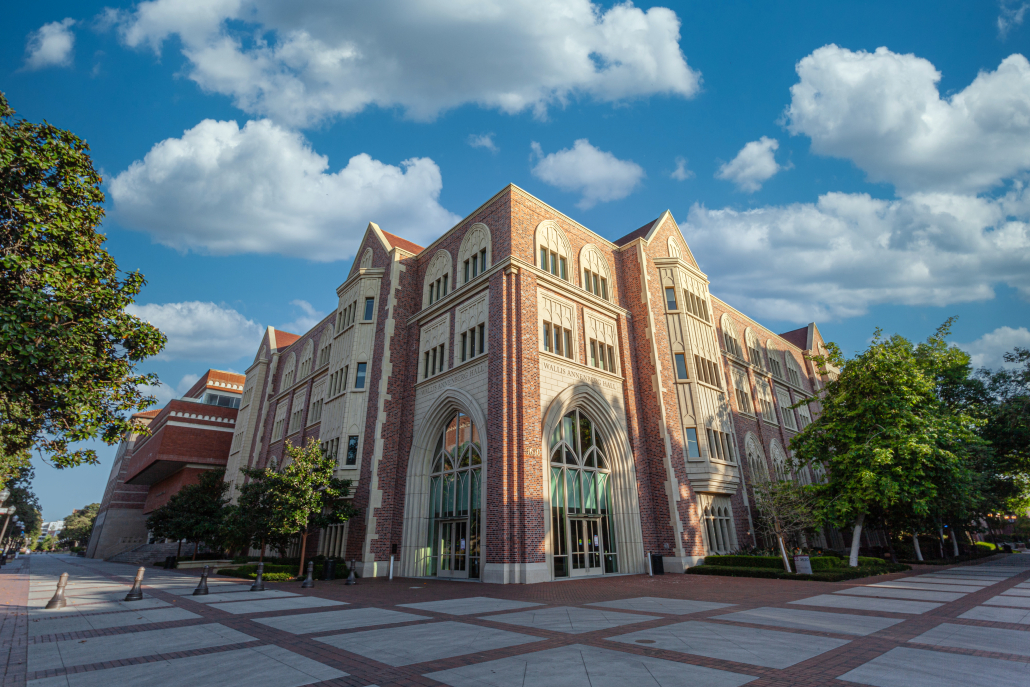Center studies health and media

Walking around her neighborhood with her summer camp in mind, high school senior Justine Nguyen noticed dim streetlights, which she connected to a more unsafe environment and a higher unhoused population. She then noticed brighter lights and a higher presence of security in a safer area located south of her neighborhood. Observing this, she realized the inequities present in her community.
This past summer, Nguyen participated in the Health Equity and Media Collaborative’s first health media summer camp. The center, hosted by the Annenberg School for Communication and Journalism, integrates public health and communication and researches improving community health through media.
Despite renovations hindering them from having a physical space, the Health Equity and Media Collaborative has been able to work toward its goal of being embedded in the community. Robin Stevens, an associate professor of communication, founded the collaborative in 2015 in hopes of simply “[showing] up” and visiting Los Angeles schools and neighborhoods to embed the collaborative in the community. However, due to the coronavirus pandemic, she and members of the collaborative came up with the idea of a summer camp to learn about L.A. through the lens of youth and be able to work with students outside of the collaborative.
“The core component of the lab is that we do community engagement research, which means that we don’t do research on the community. We do research with and by the community,” Stevens said. “The whole goal of this summer program was a kickstart, but we’re trying to be a part of communities, not like a one-time in and out. We’re here for the long term.”
During the virtual five-week camp, the participants were divided into two teams for the different projects. One involved conducting neighborhood assessments and social media observations. Additionally, the students were encouraged to go out into their communities and note the effects of gentrification, as well as observe features of different neighborhoods such as the prevalence of parks and drugstores.
Essence Wilson, a doctoral student majoring in communication, helped lead the students through the project.
“We were just understanding what is the scope of how their neighborhood impacts their mental health overall, and then we also went further and looked into their social media environment,” Wilson said. “What’s your favorite social media? How do they go on it? How do they build a community to help with their mental health?”
Nguyen’s experience with the collaborative helped her gain insight into social awareness and empathy as her final summer project culminated in a video, where she discussed how gentrification affected her family and how it impacts the mental health of society. Another student interviewed businesses in downtown Los Angeles about the financial effects of gentrification.
“I realized that a lot of people have a lot of different experiences, whether that be good or bad, and you can actually relate to everyone around you. There’s always going to be someone who has had at least some type of experience similar to yours, or at least can empathize with what you’re experiencing and vice versa,” Nguyen said.
The camp’s other project tasked students with creating media messages about sports and energy drinks targeting teen education. The students learned about communication theory and how to incorporate persuasion into their messages.
Stevens said the collaborative is currently working with a graphic designer to finalize the health messages created by the high schoolers. The messages will then be presented to a group of youth, who will provide ratings and feedback on the persuasiveness of the graphics. After this process, known as “message testing,” the lab will develop a dissemination plan in which another group of young people will determine which messages are the most effective and persuasive. Students displayed their projects such as videos, in addition to the messages, at the program’s ending showcase.
“I never expected someone to shoot a film with actors, like a 16-year old,” Stevens said. “Then, I was so impressed by another student. Her Instagram intervention about mental health was so above and beyond, and so, we’re continuing to work with at least one, and possibly more, of the students this year to continue doing more research.”
The collaborative is also working on a project, the Twitter Black and Latino Health Project, focused on HIV prevention. Using Twitter, the project aims to identify those at risk for HIV infection, primarily focusing on young Black and Latino men in L.A.
“I’m excited to see how [the lab is] going to grow at USC,” said Juan Carmen, study coordinator for the Twitter Black and Latino Health Project. “If folks are interested in doing a combination of communication and public health and research, it’s specifically for communities that are considered marginalized, [such as] in Black and brown communities. That would be a good space to kind of address some of those issues that folks might not know, or young people might know as well.”
Continuing the idea of being firm in the community, Stevens said the collaborative’s next research projects can be “hard to predict,” as the collaborative works to serve the community’s changing interests. In the future though, Stevens looks forward to the collaborative becoming a welcoming space for students from high school to graduate school to work collaboratively on research topics to improve health.
“We’ll probably spend another year digging in, building more community partners, networking, mapping that and understanding … how we look at young people who are resilient or have creativity and genius to offer,” Stevens said. “I don’t know what it’s gonna look like; I have no idea and I’m completely comfortable with that.”

